Conservation Stories
Over the past 53 years, the MMPA has shown both its successes and its shortcomings. The Marine Mammal Center has rehabilitated over 26,000 marine mammals since the landmark bill. While some species still face challenges, species such as the California sea lion, manatee, and blue whale have recovering populations.
Sea Lion Tourism
In 1990, California sea lions began to rest on San Francisco's Pier 39 and were allowed to remain on the docks by the Marine Mammal Center. The sea lions played a huge role in turning Pier 39 into a tourist attraction: one where urban growth and conservation come together to make a sea lion success story.
Watch the Pier 39 Sea Lions
"Sea Lions at Pier 39", a film by Shaping San Francisco, 1995
[Video courtesy of Chris Carlsson]
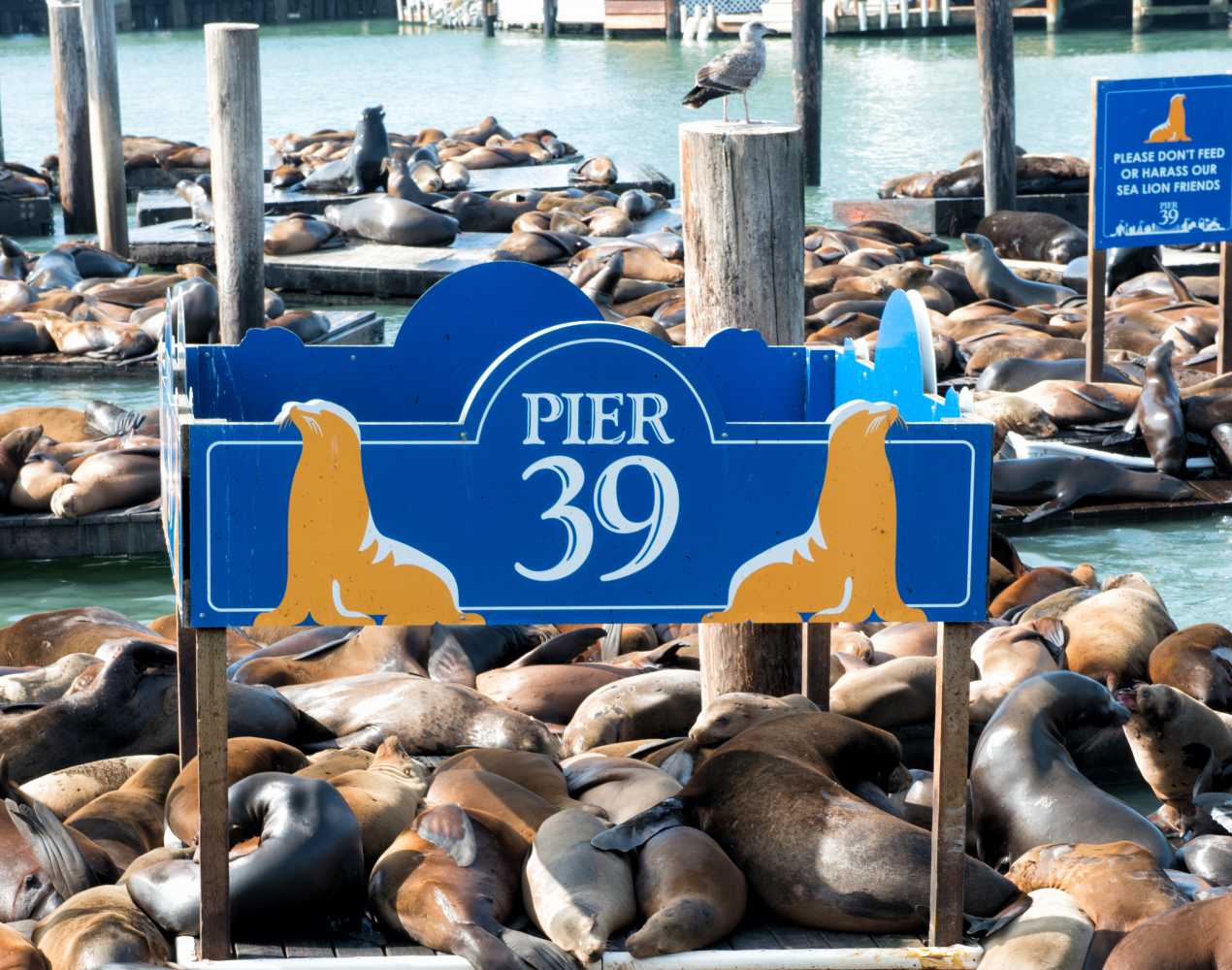
[Image courtesy of Marine Mammal Center]
"Studies have shown that certain species of marine wildlife, including whales and dolphins, are increasingly important drivers of economic growth for tourism and related industries."
- The Marine Mammal Commission
Northern Right Whale
Despite the efforts of the MMPA, the northern right whale is at risk of extinction due to climate change, ocean acidification, and other factors with only 370 remaining whales.
"The Commission for Environmental Cooperation (CEC), part of the United States-Mexico-Canada Agreement (USMCA), will investigate the U.S. for allegedly failing to effectively enforce its environmental laws in the protection of the critically endangered North Atlantic right whale."
- Erin Spampinato regarding the ongoing investigation of the U.S. in 2025
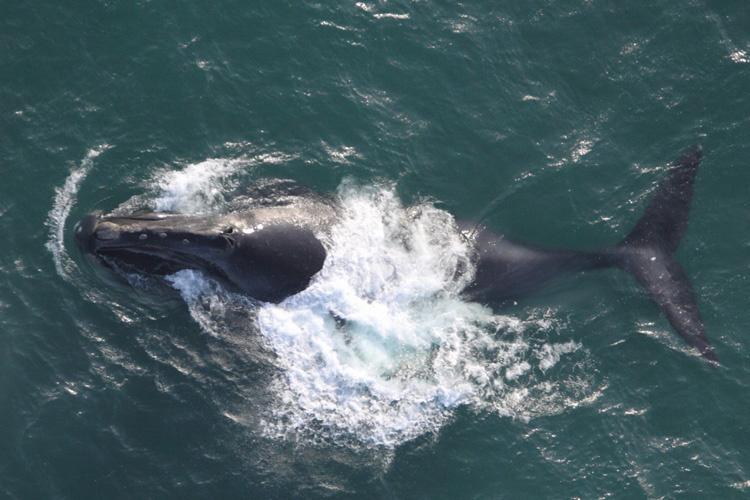
[Image courtesy of NOAA]
Columbia River Sea Lions
"Over the last decade or so, more and more of the marine mammals have crowded into the Columbia River estuary, where in 2018 they numbered an estimated 4,000 animals, most of them California sea lions. The others are Steller sea lions. That’s up from a few hundred, at most, 10-15 years ago.
The population rebound is very good news for the species, but the way in which the population has expanded its presence in the Columbia River is not good news for Columbia River spring Chinook, an endangered species."
- John Harrison, former Public Information Officer for the Northwest Power and Conservation Council, in 2018
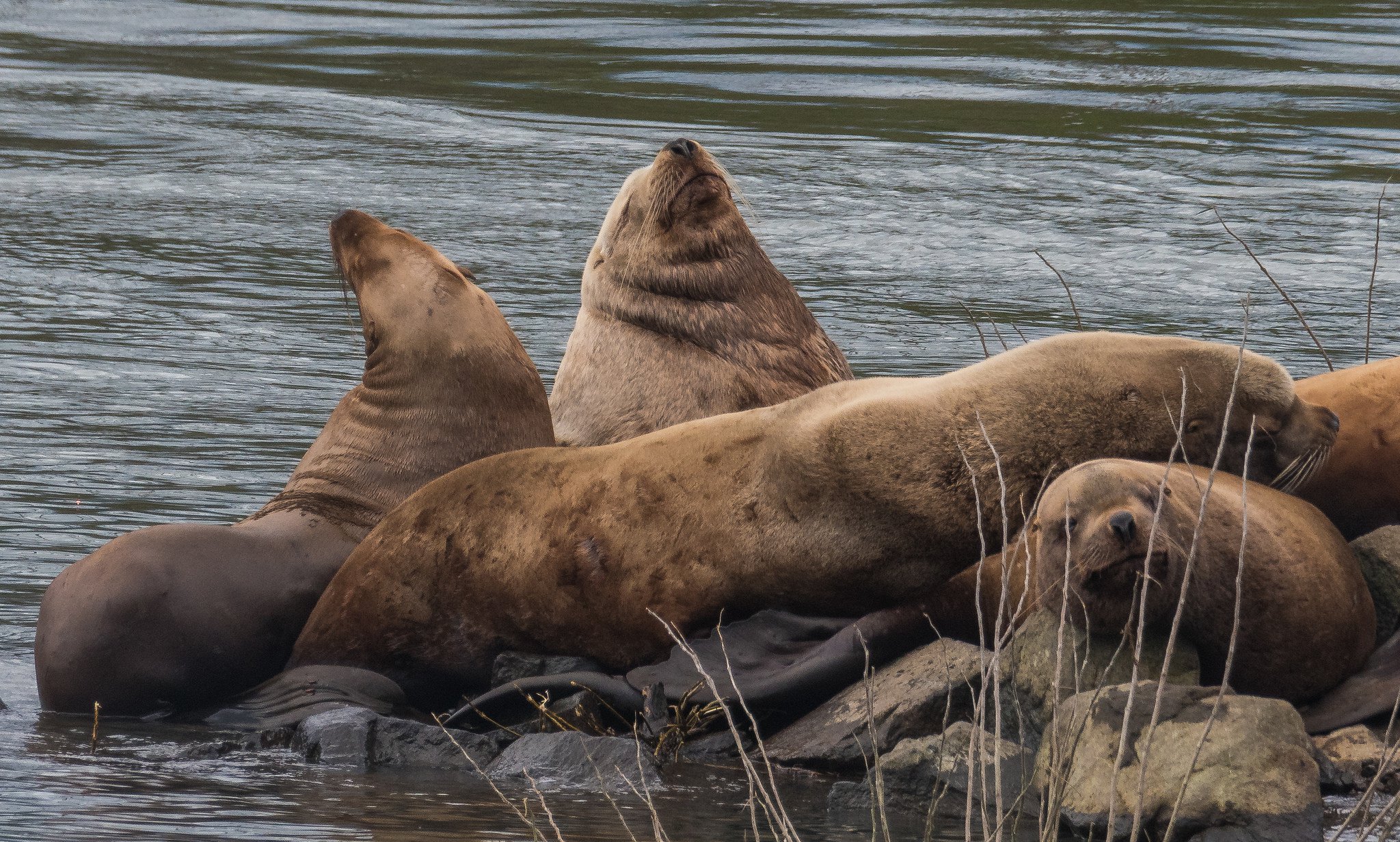
Sea Lions near Boneville Dam
[Image courtesy of North West Power and Conservation Council]
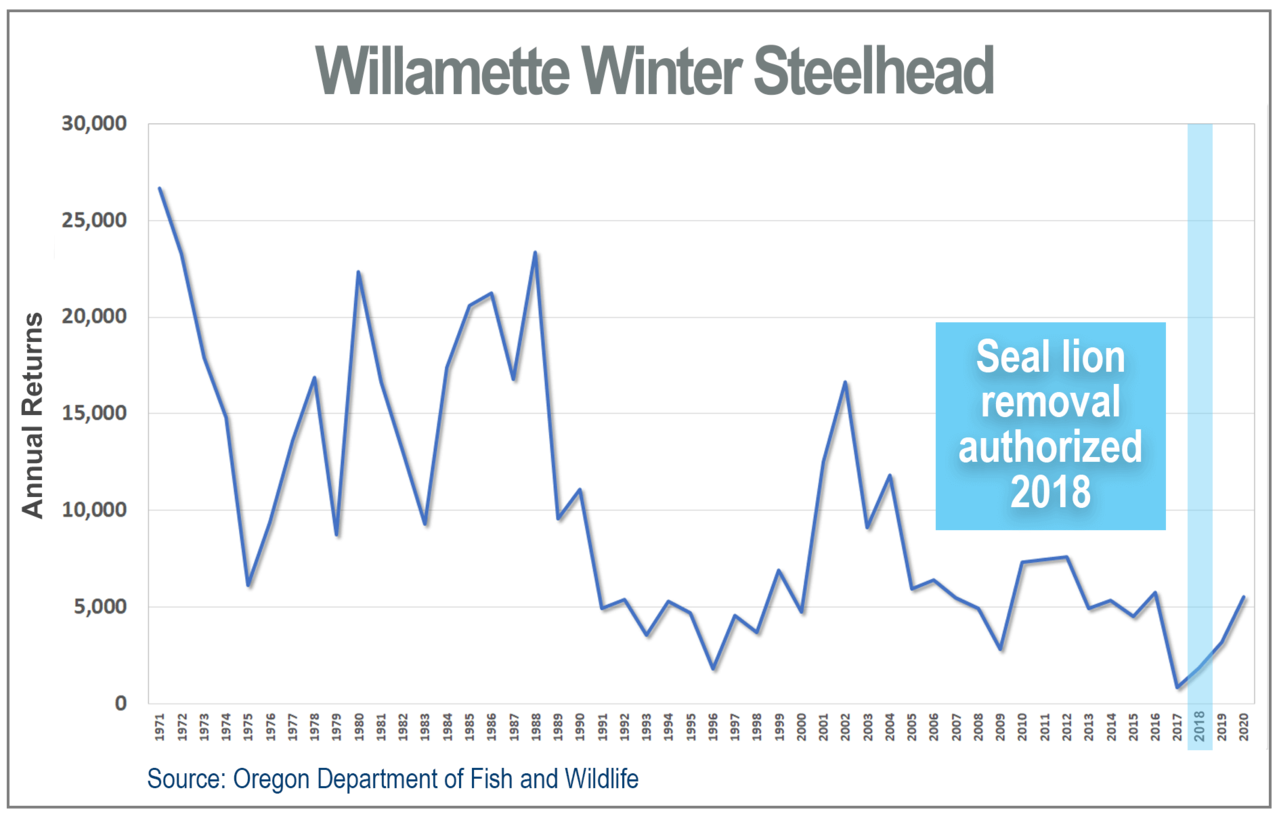
[Graph courtesy of NOAA Fisheries]
"Under MMPA Section 120, NOAA Fisheries has authorized the states of Washington, Oregon, and Idaho to lethally remove individually identifiable, predatory California Sea Lions in the vicinity of Bonneville Dam that are having a negative impact on the recovery of salmon and steelhead listed under the Endangered Species Act."
- National Oceanic and Atmospheric Administration on MMPA Section 120(f)
Northern Elephant Seal
"By 1910, it was estimated that there were fewer than 100 elephant seals, all found on Guadalupe Island off Baja California, Mexico.
Today, the northern elephant seal population has rebounded to approximately the size it was before hunting. It’s estimated that there are 150,000 individuals, with 124,000 in California waters."
- The Marine Mammal Center on northern elephant seals
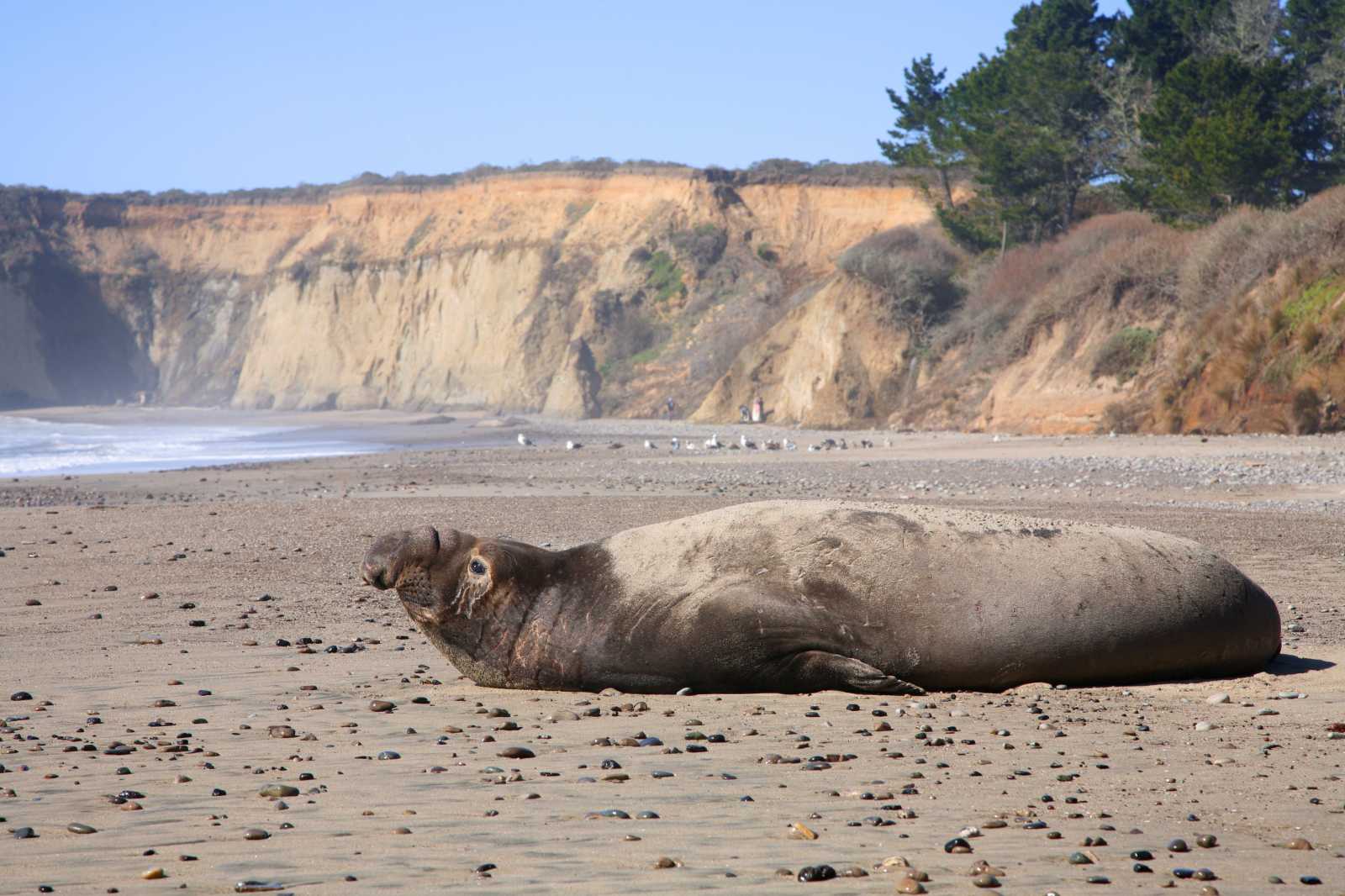
Northern Elephant Seal
[Image courtesy of Marine Mammal Center]
Disrupting Indigenous Culture
Indigenous tribes such as the Makah Nation protested against the MMPA, arguing that it interfered with their culture. They were only granted an exemption in June 2024, nearly twenty years after filing for a permit.
"All we want is the chance to protect our traditions...We believe that a population that is prepared to go whale hunting is a population that is strong, healthy and ready for the physical and spiritual training that the hunt demands."
- Janine Bowechop, executive director, Makah Cultural & Research Center
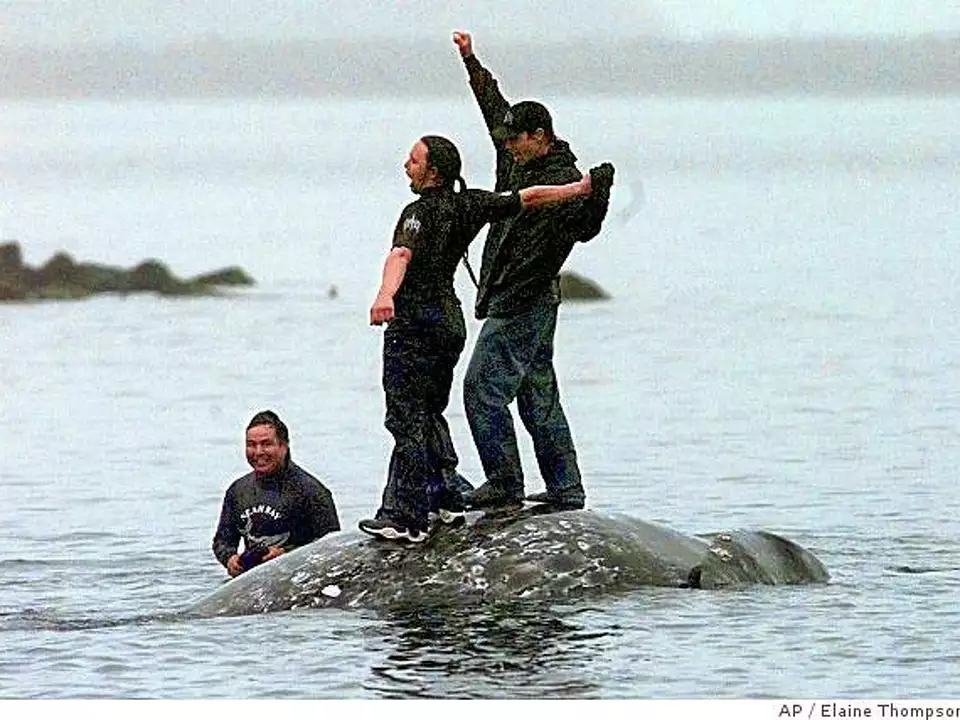
"Members of the Makah Nation and the federal government disagree over the tribe's right to kill whales"
[Image courtesy of Elaine Thompson/SFGate]
Research Interference
In 2003, biologist Peter Tyack and acoustics expert Peter Stein were developing a sonar system for ships to prevent accidental collisions with whales. However animal rights activists sued Tyack and Stein in court, fearing potential impacts of the technology to marine life. The court ruled in favor of the activists. It would take thousands of dollars in legal fees before the project was allowed to resume. The MMPA's protections make it difficult for researchers to develop new technologies that could potentially safeguard marine mammals from threats in the future.
"Scientists are not the problem, but we are easy to regulate."
"The dirty secret of the MMPA is that the prohibition on unintentional takes is ignored more often than it is regulated and enforced. There is no regulation of this risk, nor, to my knowledge, has any ship captain been prosecuted for striking a whale and killing it."
- Tyack to the Woods Hole Oceanographic Institution in 2006
Rights should not be reserved only for humans, but also for every living being inhabiting this planet. The MMPA set a standard for American citizens to show their responsibility to protect the rights of marine mammals that are crucial for a balanced ecosystem.The future will bring new environmental challenges, but the MMPA will remain essential to ensure that upcoming generations will be able to enjoy today’s marine mammals.
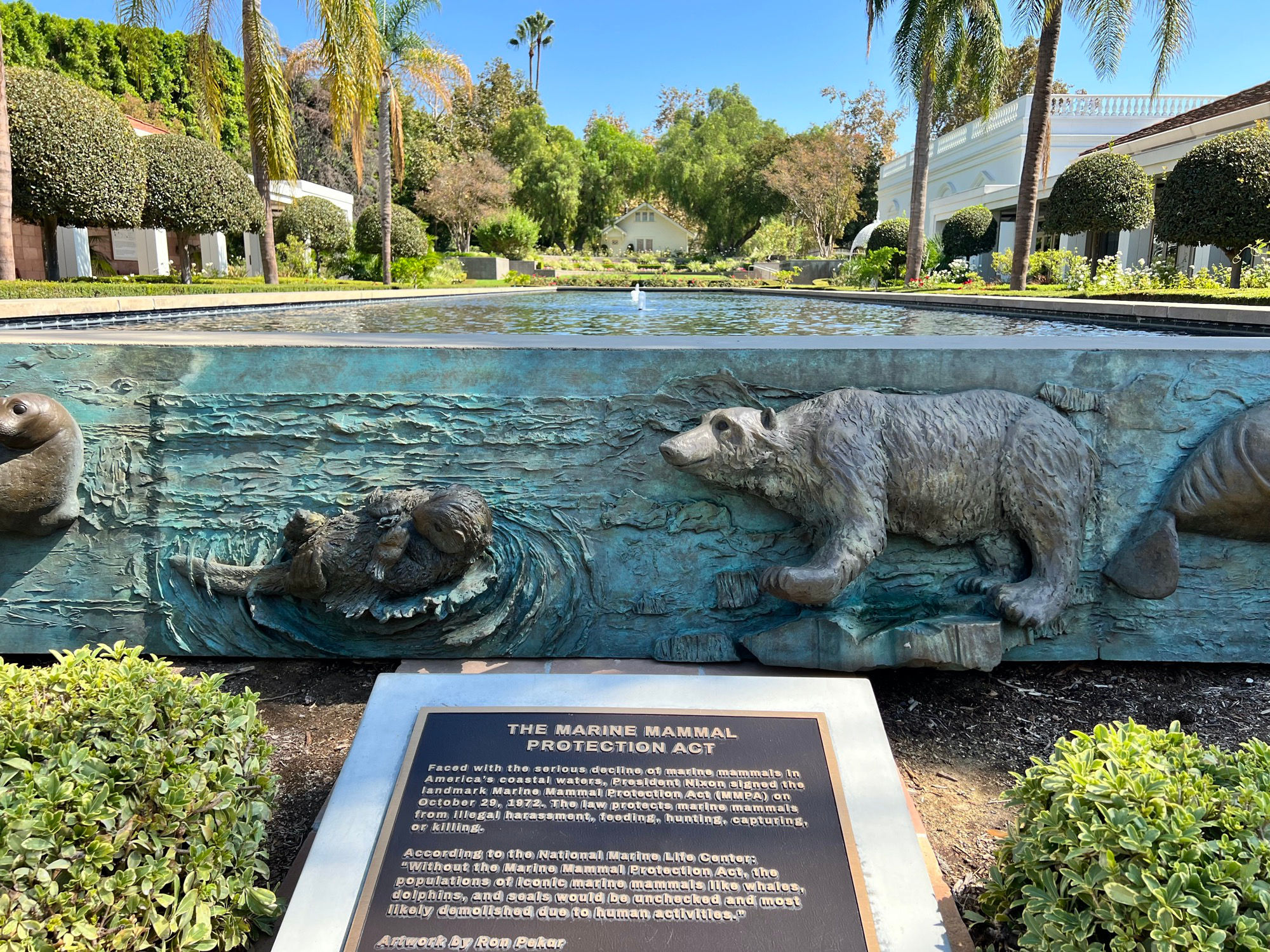
Monument to the Marine Mammal Protection Act at the Richard Nixon Presidential Library and Museum
[Image courtesy of Richard Nixon Library]